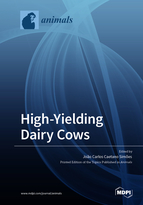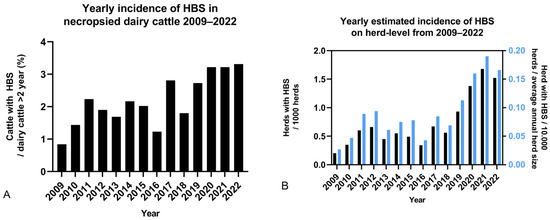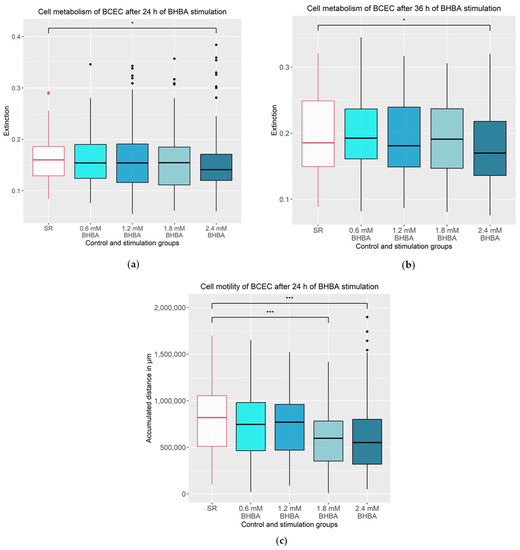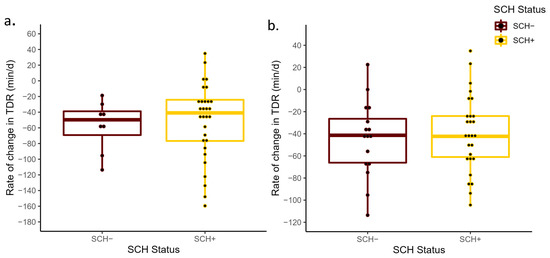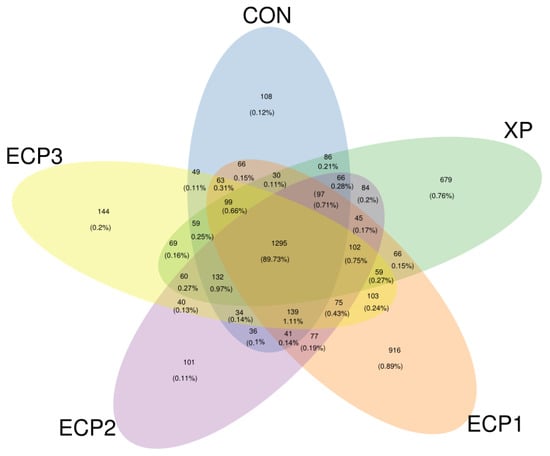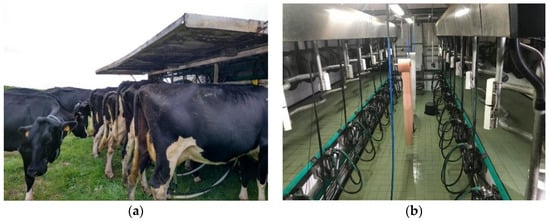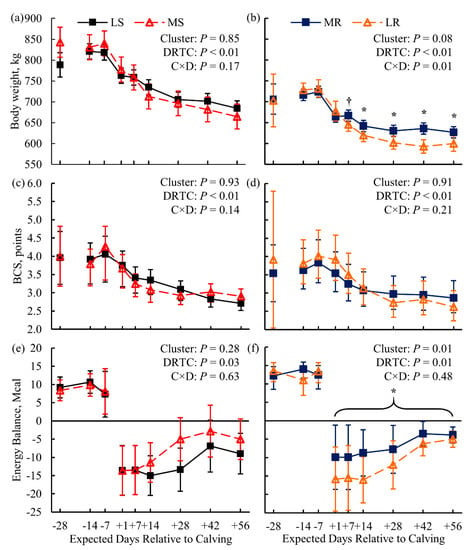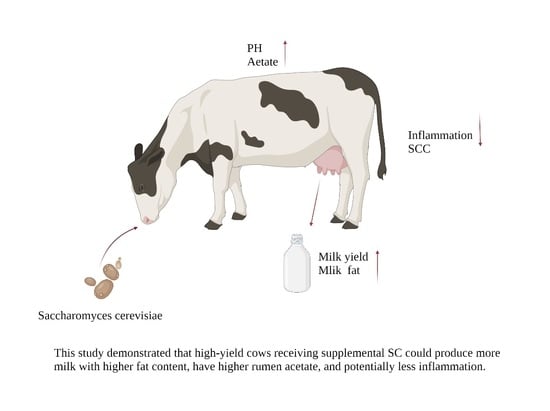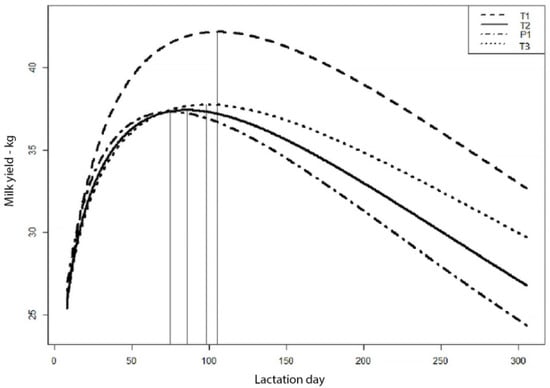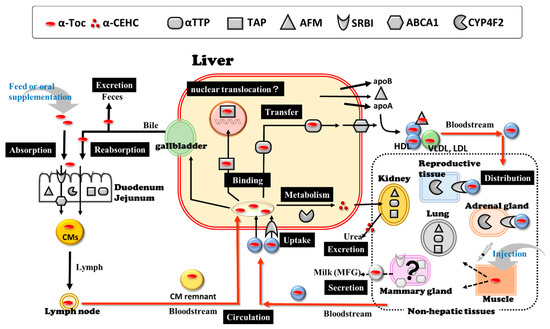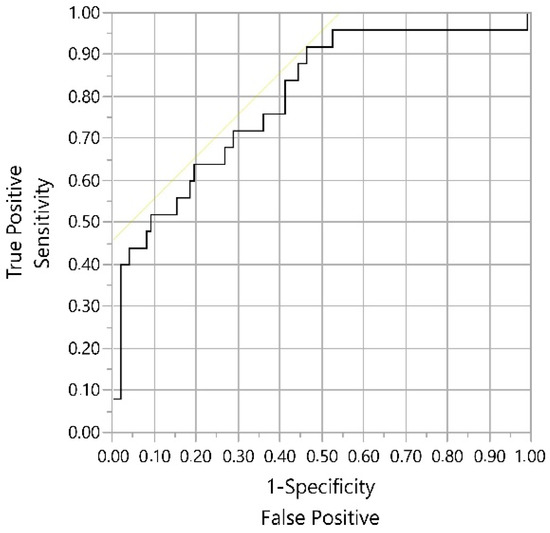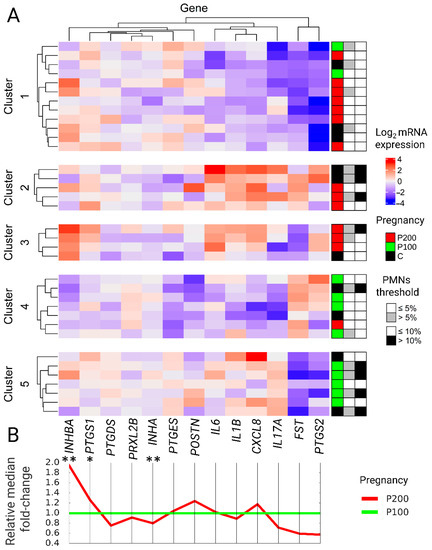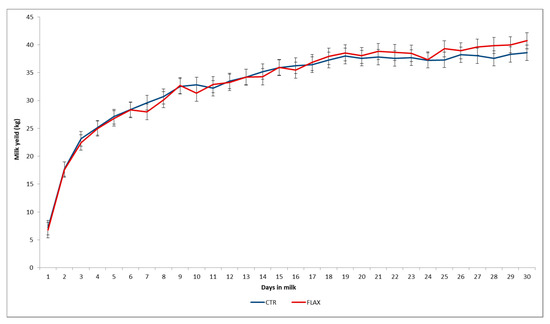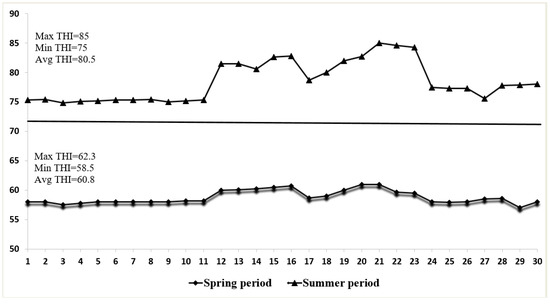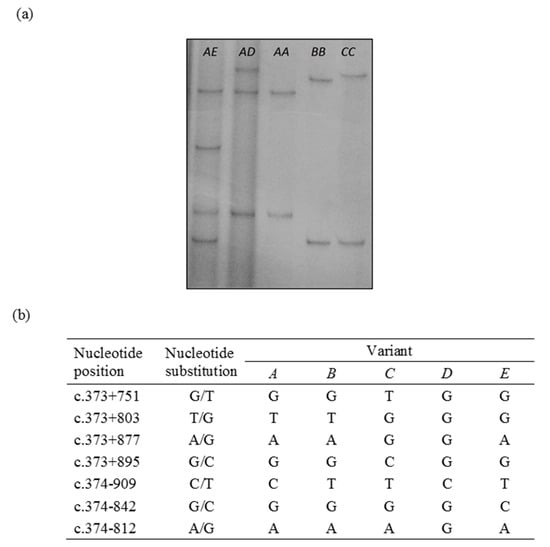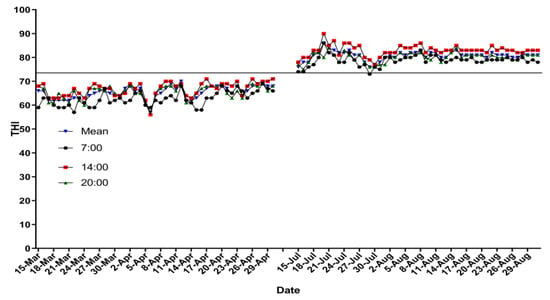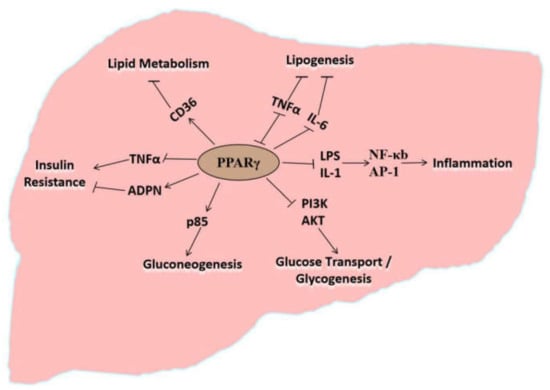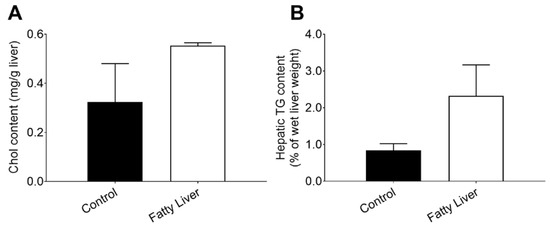High-Yielding Dairy Cows
A topical collection in Animals (ISSN 2076-2615). This collection belongs to the section "Cattle".
Viewed by 86579
Printed Edition Available!
A printed edition of this Special Issue is available
here.
Share This Topical Collection
Editor
 Prof. Dr. João Carlos Caetano Simões
Prof. Dr. João Carlos Caetano Simões
 Prof. Dr. João Carlos Caetano Simões
Prof. Dr. João Carlos Caetano Simões
E-Mail
Website
Guest Editor
Department of Veterinary Sciences, Animal and Veterinary Research Centre (CECAV), University of Trás-os-Montes e Alto Douro, 5001-801 Vila Real, Portugal
Interests: medicine of production; large animal reproduction; animal production; animal nutrition
Special Issues, Collections and Topics in MDPI journals
Topical Collection Information
Dear Colleagues,
In recent decades, genetics, nutrition, and management improvements have led to high-yielding dairy cows. Currently, the total milk yield, fat and protein contents reach unpreceded levels during their lifetime production, and more increases are expected in the next few years. These improvements pose threats and challenges to animal health and welfare due to metabolic stress.
Metabolic stress is characterized by excessive lipomobilization, inflammatory and immune dysregulations and oxidative stress on body organic systems. It mainly occurs during the periparturient period. Cows are more susceptible to metabolic and infectious diseases such as ketosis, digestive alterations, metritis, mastitis, lameness and different degrees of infertility.
The ultimate goal of this Special Issue is to aggregate new information driving to more efficient dairy cow production in confinement and pasture systems. Research studies directly or indirectly assessing all aforementioned aspects in high-producing dairy cows are welcome. Additionally, we invite research papers which promote the use of new technologies and the automatization of processes (including Agriculture 5.0) in dairy farms, as well as the production impact on the environment and public health.
Prof. João Simões
Guest Editor
Manuscript Submission Information
Manuscripts should be submitted online at www.mdpi.com by registering and logging in to this website. Once you are registered, click here to go to the submission form. Manuscripts can be submitted until the deadline. All submissions that pass pre-check are peer-reviewed. Accepted papers will be published continuously in the journal (as soon as accepted) and will be listed together on the collection website. Research articles, review articles as well as short communications are invited. For planned papers, a title and short abstract (about 100 words) can be sent to the Editorial Office for announcement on this website.
Submitted manuscripts should not have been published previously, nor be under consideration for publication elsewhere (except conference proceedings papers). All manuscripts are thoroughly refereed through a single-blind peer-review process. A guide for authors and other relevant information for submission of manuscripts is available on the Instructions for Authors page. Animals is an international peer-reviewed open access semimonthly journal published by MDPI.
Please visit the Instructions for Authors page before submitting a manuscript.
The Article Processing Charge (APC) for publication in this open access journal is 2400 CHF (Swiss Francs).
Submitted papers should be well formatted and use good English. Authors may use MDPI's
English editing service prior to publication or during author revisions.
Keywords
- high-producing dairy cows
- metabolic stress
- dairy cow production
- automatization
- postpartum diseases
- negative energy balance
- lactation
- preventive medicine
Published Papers (24 papers)
Open AccessArticle
Epidemiology of Bovine Hemorrhagic Bowel Syndrome in Belgium and The Netherlands
by
Bert De Jonge, Bart Pardon, Jeroen Dewulf, Evy Goossens, Jasper het Lam, Evert van Garderen, Stefan Roels, Jozefien Callens, Thierry Petitjean and Koen Chiers
Viewed by 853
Abstract
Hemorrhagic bowel syndrome (HBS) is a poorly understood, sporadic and often fatal disease in cattle. Although, HBS is considered an important disease in dairy cattle, epidemiological data is largely lacking. This study describes the epidemiology of HBS in Belgium and the Netherlands, based
[...] Read more.
Hemorrhagic bowel syndrome (HBS) is a poorly understood, sporadic and often fatal disease in cattle. Although, HBS is considered an important disease in dairy cattle, epidemiological data is largely lacking. This study describes the epidemiology of HBS in Belgium and the Netherlands, based on necropsy records from 2009 to 2022, and reports characteristics from 27 cows and 35 dairy operations with HBS, gathered through a survey. The annual incidence of HBS has a significantly increasing trend both at cow and herd level, with incidence above 3.2% in necropsied mature dairy cattle in the most recent years. Estimated herd-level incidence in the Netherlands was double the estimated incidence in Belgium, which might be explained by higher herd size in the Netherlands. Occurrence of HBS was most prevalent in fall, being 40.1% higher than the average of the other seasons. In 35 Flemish (Belgian) surveyed dairy herds with HBS, manifestation of HBS was mostly as solitary cases, and if multiple cases occurred, the time interval was highly variable. In addition, the majority of cows with HBS (61.1%; 16/26) were in more than 100 days lactation. In conclusion, HBS is an important and possibly emerging disease in dairy cattle in Belgium and the Netherlands.
Full article
►▼
Show Figures
Open AccessArticle
β-Hydroxybutyrate Effects on Bovine Caruncular Epithelial Cells: A Model for Investigating the Peri-Implantation Period Disruption in Ketotic Dairy Cows
by
Carolin Hildebrand, Julia Hollenbach, Bettina Seeger and Christiane Pfarrer
Cited by 1 | Viewed by 1217
Abstract
Ketosis is a metabolic disorder arising from a negative energy balance (NEB). It is characterized by high β-Hydroxybutyrate (BHBA) blood levels and associated with reduced fertility in dairy cows. To investigate the impact of BHBA on bovine caruncular epithelial cells (BCEC) in vitro,
[...] Read more.
Ketosis is a metabolic disorder arising from a negative energy balance (NEB). It is characterized by high β-Hydroxybutyrate (BHBA) blood levels and associated with reduced fertility in dairy cows. To investigate the impact of BHBA on bovine caruncular epithelial cells (BCEC) in vitro, these cells were stimulated with different concentrations of BHBA. Cell metabolism and motility were examined using an MTT assay and Live-cell imaging. RT-qPCR was used to examine mRNA expressions of
TNF,
IL6,
RELA, prostaglandin E2 synthase (
PTGES2) and receptor (
PTGER2) as well as integrin subunits
ITGAV,
ITGA6,
ITGB1 and
ITGB3. Stimulation with 1.8 and 2.4 mM of BHBA negatively affected cell metabolism and motility.
TNF showed increased mRNA expression related to rising BHBA concentrations.
IL6,
RELA,
ITGAV,
ITGA6,
ITGB1 and
ITGB3 as well as
PTGER2 showed no changes in mRNA expression. Stimulation with 0.6 and 1.2 mM of BHBA significantly increased the mRNA expression of
PTGES2. This does not indicate a negative effect on reproductive performance because low BHBA concentrations are found in steady-state conditions. However, the results of the study show negative effects of high BHBA concentrations on the function of BCECs as well as an inflammatory response. This could negatively affect the feto-maternal communication during the peri-implantation period in ketotic dairy cows.
Full article
►▼
Show Figures
Open AccessArticle
The Association between Prepartum Rumination Time, Activity and Dry Matter Intake and Subclinical Hypocalcemia and Hypomagnesemia in the First 3 Days Postpartum in Holstein Dairy Cows
by
Mahmoud H. Emam, Elise Shepley, Mourad M. Mahmoud, Megan Ruch, Sobhy Elmaghawry, Wafaa Abdelrazik, Ahmed M. Abdelaal, Brian A. Crooker and Luciano S. Caixeta
Viewed by 1706
Abstract
Changes in prepartum behaviors such as total daily rumination (TDR), total daily activity (TDA) and dry matter intake (DMI) have the potential to be used as early indicators for cows at risk for subclinical hypocalcemia (SCH) or hypomagnesemia (HYM) after calving. Our objective
[...] Read more.
Changes in prepartum behaviors such as total daily rumination (TDR), total daily activity (TDA) and dry matter intake (DMI) have the potential to be used as early indicators for cows at risk for subclinical hypocalcemia (SCH) or hypomagnesemia (HYM) after calving. Our objective was to investigate associations between average daily rate of change in total daily rumination (ΔTDR), total daily activity (ΔTDA) and dry matter intake (ΔDMI) from −3 days prepartum to calving with SCH and HYM at D0 or D3 relative to calving. Prepartum TDR, TDA and DMI were measured in 64 Holstein dairy cows. Blood samples were taken at D0 and D3 post-calving for the measurement of total plasma Ca and Mg concentration. Linear regression models were used to analyze the association between ΔTDR, ΔTDA and ΔDMI and SCH and HYM at D0 and D3 relative to calving. Potential confounding variables were offered to the models and backwards selection was used to determine which covariates to retain. No significant differences in prepartum ΔTDR, ΔTDA or ΔDMI were found between cows with or without SCH and HYM at D0 and D3. Our results suggest that the change in TDR, TDA and DMI in the last 3 days prepartum are not effective predictors for cows that will have SCH or HYM in the first 3 days postpartum.
Full article
►▼
Show Figures
Open AccessArticle
Rumen Fermentation and Microbiome Responses to Enzymatic Hydrolysate of Cottonseed Protein Supplementation in Continuous In Vitro Culture
by
Jia Zhou, Ziyue Ding, Qijian Pu, Benchu Xue, Shuangming Yue, Shengtao Guan, Zhisheng Wang, Lizhi Wang, Quanhui Peng and Bai Xue
Cited by 4 | Viewed by 1754
Abstract
This study aimed to evaluate the effect of enzymatic hydrolysate of cottonseed protein (ECP) on the kinetic of gas production, rumen fermentation characteristics, and microbial diversity in continuous in vitro culture with a single factorial design of supplementation with various concentrations of ECP
[...] Read more.
This study aimed to evaluate the effect of enzymatic hydrolysate of cottonseed protein (ECP) on the kinetic of gas production, rumen fermentation characteristics, and microbial diversity in continuous in vitro culture with a single factorial design of supplementation with various concentrations of ECP or yeast culture. Treatments were control (without supplementation, CON), supplementation with 10 g/kg Diamond-V XP yeast culture of substrate (XP), and supplementation with 6, 12 and 18 g/kg ECP of substrate (ECP1, ECP2, ECP3), each incubated with 30 mL of buffered incubation fluids and 200 mg of fermentation substrate in graduated glass syringes fitted with plungers for 48 h. Compared with the CON treatment, supplementation of XP yeast culture increased the cumulative gas production at 12 and 24 h, the concentration of ammonia nitrogen (NH
3-N) concentration at 24 and 36 h, the concentration of microbial protein (MCP) concentration at 24 and 48 h, the molar butyrate proportion at 12, 24, and 48 h, the molar valerate proportion at 48 h, and the ratio of non-glucogenic to glucogenic acids (
p < 0.05). Compared with the CON treatment, the concentration of MCP and the molar propionate proportion at 12 h were higher in the ECP1 treatment (
p < 0.05); the cumulative gas production at 2, 4, and 12 h, the concentration of NH
3-N at 36 h and the molar valerate proportion at 48 h were higher in the ECP2 treatment (
p < 0.05); the cumulative gas production at 2, 12, and 48 h, the concentration of NH
3-N at 12 and 36 h, the concentration of MCP at 12, 36, and 48 h, the molar butyrate proportion at 12 and 48 h, and the molar valerate proportion at 48 h were higher in the ECP3 treatment (
p < 0.05). Compared with the CON treatment, supplementation with XP yeast culture significantly altered the relative abundance of the phyla Firmicutes, Kiritimatiellaeota, and Proteobacteria, while supplementation with ECP had minimal effect on bacterial diversity. The prediction of bacterial functions showed that the main gene functions of rumen bacteria are associated with carbohydrate metabolism, amino acid metabolism, and membrane transport. The findings of this study suggest that ECP can be used as a superior feed ingredient for ruminants, the suitable level of ECP was 18 g/kg in vitro experiment.
Full article
►▼
Show Figures
Open AccessArticle
Production and Health Management from Grazing to Confinement Systems of Largest Dairy Bovine Farms in Azores: A Farmers’ Perspective
by
Ivo Medeiros, Aitor Fernandez-Novo, Susana Astiz and João Simões
Cited by 6 | Viewed by 2792
Abstract
The intensification of bovine milk production in the Azores has led farmers to increase farm size and specialization in grasslands, implementing confined and semi-confined production systems. Fixed milking parlours (FMP) have progressively gained more popularity, at the expense of conventional mobile milking systems
[...] Read more.
The intensification of bovine milk production in the Azores has led farmers to increase farm size and specialization in grasslands, implementing confined and semi-confined production systems. Fixed milking parlours (FMP) have progressively gained more popularity, at the expense of conventional mobile milking systems (MMS). The present study aimed to evaluate the associations between production and health management in dairy cattle farms, with FMP or MMS, in grasslands (São Miguel, Azores), according to the farmers’ perspective. A total of 102 questions about production and health management were surveyed in 105 farms with >30 dairy cows each. Farms with FMP were associated (
p ≤ 0.05) with larger herd size, better facilities, and specialized management, however, the adoption of preventive and biosecurity measures should be improved by these farmers. MMS farms implemented a lower level of disease prevention or control programs, less frequent transhumance, and showed a wider vocation to dual-purpose (milk and cross beef) than FMP farms. In conclusion, MMS and FMP farms tried to optimize yield and economic viability in different ways using grasslands. Several biosecurity and health prevention constraints were identified for improvement.
Full article
►▼
Show Figures
Open AccessArticle
A Randomized Clinical Trial Evaluating the Effect of an Oral Calcium Bolus Supplementation Strategy in Postpartum Jersey Cows on Mastitis, Culling, Milk Production, and Reproductive Performance
by
Paulo R. Menta, Leticia Fernandes, Diego Poit, Maria Luiza Celestino, Vinicius S. Machado and Rafael C. Neves
Cited by 2 | Viewed by 1660
Abstract
The objectives of this study were to evaluate the effects of a postpartum oral calcium supplementation strategy in multiparous Jersey cows on (1) the odds of clinical mastitis in the first 60 days in milk (DIM); (2) the odds of culling up to
[...] Read more.
The objectives of this study were to evaluate the effects of a postpartum oral calcium supplementation strategy in multiparous Jersey cows on (1) the odds of clinical mastitis in the first 60 days in milk (DIM); (2) the odds of culling up to 60 DIM; (3) the risk of pregnancy in the first 150 DIM; (4) milk production in the first 15 weeks of lactation. A randomized clinical trial was performed in a dairy herd located in west Texas, United States. A total of 809 cows were used in the final analyses. Overall, postpartum oral calcium supplementation did not influence milk production, reproductive performance, or culling. Among second parity cows, oral calcium supplementation tended to decrease the odds of clinical mastitis in the first 60 DIM compared to controls; however, no differences were observed for cows in parities three and greater. To date, data evaluating the effect of postpartum oral calcium supplementation in multiparous Jersey cows are limited. In our study, oral calcium supplementation tended to reduce clinical mastitis in second parity cows. No positive benefits based on the reduction of culling, and improvement of milk production and reproductive performance were evident for the herd included in this study.
Full article
Open AccessArticle
Novel Facets of the Liver Transcriptome Are Associated with the Susceptibility and Resistance to Lipid-Related Metabolic Disorders in Periparturient Holstein Cows
by
Ryan S. Pralle, Wenli Li, Brianna N. Murphy, Henry T. Holdorf and Heather M. White
Cited by 3 | Viewed by 2954
Abstract
Lipid-related metabolic disorders (LRMD) are prevalent in early lactation dairy cows, and have detrimental effects on productivity and health. Our objectives were to identify cows resistant or susceptible to LRMD using a ketosis induction protocol (KIP) to discover differentially expressed liver genes and
[...] Read more.
Lipid-related metabolic disorders (LRMD) are prevalent in early lactation dairy cows, and have detrimental effects on productivity and health. Our objectives were to identify cows resistant or susceptible to LRMD using a ketosis induction protocol (KIP) to discover differentially expressed liver genes and metabolic pathways associated with disposition. Clustering cows based on postpartum lipid metabolite concentrations within dietary treatments identified cows more or less susceptible (MS vs. LS) to LRMD within the control treatment, and more or less resistant (MR vs. LR) within the KIP treatment. Whole-transcriptome RNA sequencing was performed on liver samples (−28, +1, and +14 days relative to calving) to assess differential gene and pathway expression (LS vs. MS; MR vs. LR;
n = 3 cows per cluster). Cows within the MS and LR clusters had evidence of greater blood serum β-hydroxybutyrate concentration and liver triglyceride content than the LS and MR clusters, respectively. The inferred metabolism of differentially expressed genes suggested a role of immune response (i.e., interferon-inducible proteins and major histocompatibility complex molecules). Additionally, unique roles for glutathione metabolism and eicosanoid metabolism in modulating susceptibility and resistance, respectively, were implicated. Overall, this research provides novel insight into the role of immunometabolism in LRMD pathology, and suggests the potential for unique control points for LRMD progression and severity.
Full article
►▼
Show Figures
Open AccessArticle
Effects of Saccharomyces cerevisiae Culture on Ruminal Fermentation, Blood Metabolism, and Performance of High-Yield Dairy Cows
by
Xiaoge Sun, Yue Wang, Erdan Wang, Shu Zhang, Qianqian Wang, Yan Zhang, Yajing Wang, Zhijun Cao, Hongjian Yang, Wei Wang and Shengli Li
Cited by 13 | Viewed by 3731
Abstract
High-yield dairy cows with high-concentrate diets are more prone to experiencing health problems associated with rumen microbial imbalance. This study assessed the effects of
Saccharomyces cerevisiae culture (SC), a food supplement, on ruminal pH, volatile fatty acid (VFA), inflammatory cytokines, and performance of
[...] Read more.
High-yield dairy cows with high-concentrate diets are more prone to experiencing health problems associated with rumen microbial imbalance. This study assessed the effects of
Saccharomyces cerevisiae culture (SC), a food supplement, on ruminal pH, volatile fatty acid (VFA), inflammatory cytokines, and performance of high-yield dairy cows. Forty Holstein cows with similar characteristics (e.g., milk yield, days of milk, and parity) were randomly divided into two groups: an experimental group fed the basal ration supplemented with the SC of 100 g of SC per cow per day (hour, SC group), and a control group fed the same basal ration diet without SC (i.e., CON group). On average, the supplementation of SC started at 73 days of lactation. The experimental period lasted approximately 70 days (from 18 January to 27 March 2020), including 10 days for dietary adaptation. Milk yield was recorded daily. Rumen fluid and milk samples were collected after 2 h of feeding in the morning of day 0, 15, 30, and 60. The data showed that rumen pH increased (
p < 0.05) when cows were provided with SC. On average, the cows in the SC group produced 1.36 kg (
p < 0.05) more milk per day than those in the CON group. Milk fat content of cows in the SC group was also higher (4.11% vs. 3.96%) (
p < 0.05). Compared with the CON group, the concentration of acetic acid in the rumen fluid of dairy cows in the SC group was significantly higher (
p < 0.05). There were no differences (
p > 0.05) found in milk protein content and propionic acid between groups. The SC group had a tendency increase in butyric acid (
p = 0.062) and total VFA (
p = 0.058). The result showed that SC supplementation also enhanced the ratio between acetic and propionic. Most of the mean inflammatory cytokine (IL-2, IL-6, γ-IFN, and TNF-α) concentrations (
p < 0.05) of the SC group were lower than CON group. This study demonstrated that high-yield cows receiving supplemental SC could produce more milk with higher fat content, have higher rumen acetate, and potentially less inflammatory cytokines.
Full article
►▼
Show Figures
Open AccessReview
Amino Acids Supplementation for the Milk and Milk Protein Production of Dairy Cows
by
Jung-Eun Kim and Hong-Gu Lee
Cited by 16 | Viewed by 8017
Abstract
As the preference of consumers for casein products has increased, the protein content of milk from dairy cows is drawing more attention. Protein synthesis in the milk of dairy cows requires a proper supply of dietary protein. High protein supplementation may help to
[...] Read more.
As the preference of consumers for casein products has increased, the protein content of milk from dairy cows is drawing more attention. Protein synthesis in the milk of dairy cows requires a proper supply of dietary protein. High protein supplementation may help to produce more milk protein, but residues in feces and urine cause environmental pollution and increase production costs. As such, previous studies have focused on protein supplements and amino acid (AA) supply. This review concerns AA nutrition for enhancing milk protein in dairy cows, and mainly focuses on three AAs: methionine, lysine, and histidine. AA supplementation for promoting protein synthesis is related to the mammalian target of rapamycin (mTOR) complex and its downstream pathways. Each AA has different stimulating effects on the mTOR translation initiation pathway, and thus manifests different milk protein yields. This review will expand our understanding of AA nutrition and the involved pathways in relation to the synthesis of milk protein in dairy cows.
Full article
►▼
Show Figures
Open AccessArticle
The Effect of Feeding Management and Culling of Cows on the Lactation Curves and Milk Production of Primiparous Dairy Cows
by
Jolanta Różańska-Zawieja, Stanisław Winnicki, Joanna Zyprych-Walczak, Alicja Szabelska-Beręsewicz, Idzi Siatkowski, Włodzimierz Nowak, Barbara Stefańska, Ryszard Kujawiak and Zbigniew Sobek
Cited by 4 | Viewed by 4699
Abstract
The study attempted to estimate the lactation curves of primiparous dairy cows in relation to their feeding management. Therefore, the first aim of the study was to determine and compare the lactation curves of primiparous dairy cows using Wood’s model and to estimate
[...] Read more.
The study attempted to estimate the lactation curves of primiparous dairy cows in relation to their feeding management. Therefore, the first aim of the study was to determine and compare the lactation curves of primiparous dairy cows using Wood’s model and to estimate the association between the lactation curves and feeding management. The second objective was to investigate the effect of the culling rate on improvement in the milk yield of primiparous dairy herds. The study was conducted on four commercial dairy farms of Polish Holstein–Friesian cows using different feeding systems (TMR—total mixed ration and PMR—partial mixed ration) and management (T1—one TMR throughout lactation; P1—one PMR throughout lactation; T2 and T3—three feed periods such as FRESH, TMR I and TMR II according to days in milk). The data used for the study were obtained from monthly milk performance evaluations of 1662 primiparous cows conducted by the Polish Federation of Cattle Breeding and Dairy Farmers throughout the year 2015. Wood’s lactation model was used to plot curves for milk yield, fat and protein content, lactose content, and milk urea contents. The highest milk yield for the whole lactation and in the peak lactation phase was recorded for cows in herd T1. This herd reached peak lactation on day 105 of milking, with an average milk yield of 42.1 kg, which was about 5 kg more milk than in the other herds. The study showed that the culling of primiparous cows in herd T1 after 30, 60 and 90 days of lactation prevented a significant reduction in milk yield in a 305-day lactation. It also increased average milk production by 1586.9 kg per primiparous dairy cow.
Full article
►▼
Show Figures
Open AccessArticle
The Capacity of Holstein-Friesian and Simmental Cows to Correct a Negative Energy Balance in Relation to Their Performance Parameters, Course of Lactation, and Selected Milk Components
by
Ilona Strączek, Krzysztof Młynek and Agata Danielewicz
Cited by 10 | Viewed by 4006
Abstract
A significant factor in improving the performance of dairy cows is their physiological ability to correct a negative energy balance (NEB). This study, using Simmental (SIM) and Holstein-Friesian (HF) cows, aimed to assess changes in NEB (non-esterified fatty acid; body condition score; and
[...] Read more.
A significant factor in improving the performance of dairy cows is their physiological ability to correct a negative energy balance (NEB). This study, using Simmental (SIM) and Holstein-Friesian (HF) cows, aimed to assess changes in NEB (non-esterified fatty acid; body condition score; and C16:0, C18:0, and C18:1) and its effect on the metabolic efficiency of the liver (β-hydroxybutyrate and urea). The effects of NEB on daily yield, production at peak lactation and its duration, and changes in selected milk components were assessed during complete lactation. Up to peak lactation, the loss of the body condition score was similar in both breeds. Subsequently, SIM cows more efficiently restored their BCS. HF cows reached peak lactation faster and with a higher milk yield, but they were less able to correct NEB. During lactation, their non-esterified fatty acid, β-hydroxybutyrate, C16:0, C18:0, C18:1, and urea levels were persistently higher, which may indicate less efficient liver function during NEB. The dynamics of NEB were linked to levels of leptin, which has anorectic effects. Its content was usually higher in HF cows and during intensive lactogenesis. An effective response to NEB may be exploited to improve the production and nutritional properties of milk. In the long term, it may extend dairy cows’ productive life and increase lifetime yield.
Full article
Open AccessReview
Recent Possibilities for the Diagnosis of Early Pregnancy and Embryonic Mortality in Dairy Cows
by
Ottó Szenci
Cited by 20 | Viewed by 6862
Abstract
One of the most recent techniques for the on-farm diagnosis of early pregnancy (EP) in cattle is B-mode ultrasonography. Under field conditions, acceptable results may be achieved with ultrasonography from Days 25 to 30 post-AI. The reliability of the test greatly depends on
[...] Read more.
One of the most recent techniques for the on-farm diagnosis of early pregnancy (EP) in cattle is B-mode ultrasonography. Under field conditions, acceptable results may be achieved with ultrasonography from Days 25 to 30 post-AI. The reliability of the test greatly depends on the frequency of the transducer used, the skill of the examiner, the criterion used for a positive pregnancy diagnosis (PD), and the position of the uterus in the pelvic inlet. Non-pregnant animals can be selected accurately by evaluating blood flow in the corpus luteum around Day 20 after AI, meaning we can substantially improve the reproductive efficiency of our herd. Pregnancy protein assays (PSPB, PAG-1, and PSP60 RIA, commercial ELISA or rapid visual ELISA tests) may provide an alternative method to ultrasonography for determining early pregnancy or late embryonic/early fetal mortality (LEM/EFM) in dairy cows. Although the early pregnancy factor is the earliest specific indicator of fertilization, at present, its detection is entirely dependent on the use of the rosette inhibition test; therefore, its use in the field needs further developments. Recently found biomarkers like interferon-tau stimulated genes or microRNAs may help us diagnose early pregnancy in dairy cows; however, these tests need further developments before their general use in the farms becomes possible.
Full article
Open AccessReview
The Physiological Roles of Vitamin E and Hypovitaminosis E in the Transition Period of High-Yielding Dairy Cows
by
Satoshi Haga, Hiroshi Ishizaki and Sanggun Roh
Cited by 10 | Viewed by 4321
Abstract
Levels of alpha-tocopherol (α-Toc) decline gradually in blood throughout prepartum, reaching lowest levels (hypovitaminosis E) around calving. Despite numerous reports about the disease risk in hypovitaminosis E and the effect of α-Toc supplementation on the health of transition dairy cows, its risk and
[...] Read more.
Levels of alpha-tocopherol (α-Toc) decline gradually in blood throughout prepartum, reaching lowest levels (hypovitaminosis E) around calving. Despite numerous reports about the disease risk in hypovitaminosis E and the effect of α-Toc supplementation on the health of transition dairy cows, its risk and supplemental effects are controversial. Here, we present some novel data about the disease risk of hypovitaminosis E and the effects of α-Toc supplementation in transition dairy cows. These data strongly demonstrate that hypovitaminosis E is a risk factor for the occurrence of peripartum disease. Furthermore, a study on the effectiveness of using serum vitamin levels as biomarkers to predict disease in dairy cows was reported, and a rapid field test for measuring vitamin levels was developed. By contrast, evidence for how hypovitaminosis E occurred during the transition period was scarce until the 2010s. Pioneering studies conducted with humans and rodents have identified and characterised some α-Toc-related proteins, molecular players involved in α-Toc regulation followed by a study in ruminants from the 2010s. Based on recent literature, the six physiological factors: (1) the decline in α-Toc intake from the close-up period; (2) changes in the digestive and absorptive functions of α-Toc; (3) the decline in plasma high-density lipoprotein as an α-Toc carrier; (4) increasing oxidative stress and consumption of α-Toc; (5) decreasing hepatic α-Toc transfer to circulation; and (6) increasing mammary α-Toc transfer from blood to colostrum, may be involved in α-Toc deficiency during the transition period. However, the mechanisms and pathways are poorly understood, and further studies are needed to understand the physiological role of α-Toc-related molecules in cattle. Understanding the molecular mechanisms underlying hypovitaminosis E will contribute to the prevention of peripartum disease and high performance in dairy cows.
Full article
►▼
Show Figures
Open AccessArticle
Milk Beta-Hydroxybutyrate and Fat to Protein Ratio Patterns during the First Five Months of Lactation in Holstein Dairy Cows Presenting Treated Left Displaced Abomasum and Other Post-Partum Diseases
by
Mariana Alves Caipira Lei and João Simões
Cited by 2 | Viewed by 2021
Abstract
The main objective of the present study was to evaluate the beta-hydroxybutyrate (BHB) and fat to protein content (F:P) ratio patterns in the milk of Holstein cows with postpartum diseases throughout the first five months of lactation. This prospective study was performed at
[...] Read more.
The main objective of the present study was to evaluate the beta-hydroxybutyrate (BHB) and fat to protein content (F:P) ratio patterns in the milk of Holstein cows with postpartum diseases throughout the first five months of lactation. This prospective study was performed at Vestjyske Dyrlaeger ApS (Nørre Nebel, Denmark). The milk fat, protein, and BHB were evaluated in the Danish Eurofins laboratory according to the monthly averaged days in milk (DIM1 to 5). According to clinical records, five groups were formed: A (control group; cows without diseases;
n = 32), B (cows with left displaced abomasum -LDA- and concomitant diseases;
n = 25); C (cows with other diseases up to DIM3;
n = 13); D (cows with foot disorders up to DIM3;
n = 26); and E (cows with disease manifestations in DIM4 and DIM5;
n = 26). All the sick cows were treated after diagnosis, and laparoscopy was performed on cows with LDA. In group B, a higher concentration of BHB (0.18 ± 0.02 mmol/L;
p < 0.001) was observed than in the control group (0.07 ± 0.02 mmol/L;
p < 0.001) in DIM1, presenting an odds ratio (OR) = 8.9. In all groups, BHB decreased to 0.03–0.05 mmol/L (
p < 0.05) since DIM3. The F:P ratio was higher in group B (1.77 ± 0.07) than in group A (1.32 ± 0.06;
p < 0.05) in DIM1. A similar profile is observed in DIM2. It was observed that animals in group B were four to six times more likely to have a F:P ratio ≥1.29 during DIM1 (OR = 4.0; 95% CI:1.3–14.4;
p = 0.01) and DIM2 (OR = 5.9; 95% CI %:1.9–21.9;
p < 0.01), than cows in group A. There were also moderate and high correlations between the F:P ratio and the BHB for DIM1 (r = 0.57; r
2 = 0.33; RSD = 0.09;
p < 0.001) and DIM2 (r = 0.78; r
2 = 0.60; RSD = 0.07;
p < 0.001), respectively. We concluded that animals affected by LDA in the postpartum period have a higher concentration of BHB in milk in DIM1 and all treated animals quickly recover BHB levels up to DIM3. The F:P ratio is a viable and economic indicator, mainly in DIM1 and DIM2, to estimate BHB concentration and energy balance in cows with LDA and other postpartum diseases.
Full article
►▼
Show Figures
Open AccessArticle
Prediction of Calving to Conception Interval Length Using Algorithmic Analysis of Endometrial mRNA Expression in Bovine
by
Dawid Tobolski, Karolina Łukasik, Agnieszka Bacławska, Dariusz Jan Skarżyński, Miel Hostens and Wojciech Barański
Cited by 2 | Viewed by 2700
Abstract
After parturition, the uterus undergoes significant reconstruction, allows the endometrium to create an environment for subsequent embryo development. Here, we used an unsupervised algorithmic approach to select characteristic endometrial mRNA expression patterns of proposed markers and investigate each marker’s role as an individual
[...] Read more.
After parturition, the uterus undergoes significant reconstruction, allows the endometrium to create an environment for subsequent embryo development. Here, we used an unsupervised algorithmic approach to select characteristic endometrial mRNA expression patterns of proposed markers and investigate each marker’s role as an individual indicator of reproductive success. Clinically healthy cows at a sixth week postpartum were examined, the percentage of neutrophils (PMNs%) in the cytological smear was calculated, and an endometrial biopsy was taken for qPCR. Based on pregnancy examination, cows were divided into three groups: Pregnant before 100 days postpartum (P100, n = 11), pregnant between 100–200-day (P200, n = 14), and culled (C, n = 10). Animals were also classified based on two PMNs% thresholds > 5% PMNs and > 10% PMNs. The expression of
IL1B, IL6, CXCL8, and
IL17A was higher in >10%PMNs. The expression of PTGS1 was higher in the P200 compared to P100. Upregulation of inhibin A subunit (
INHA) and downregulation of inhibin β A subunit (
INHBA) were observed in the P100.
INHBA/INHA ratio was the most accurate linear predictor of the calving-to-conception interval. The application of the k-means algorithm allowed the identification of five unique expression patterns. The sensitivity and specificity of predicting allocation to P100 were 81% and 79%. We also documented the low efficiency of genes associated with subclinical endometritis and PMNs% in determining reproductive capability. These results suggested the presence of distinctive expression patterns in 6 weeks postpartum, correlated with cows’ reproductive capacity. Furthermore, we proposed the
INHBA/INHA ratio as an indicator of calving-to-conception interval length.
Full article
►▼
Show Figures
Open AccessArticle
The Effect of Energy Metabolism up to the Peak of Lactation on the Main Fractions of Fatty Acids in the Milk of Selected Dairy Cow Breeds
by
Krzysztof Młynek, Agata Danielewicz and Ilona Strączek
Cited by 6 | Viewed by 2298
Abstract
During early lactation in dairy cows, metabolic processes are adopted to provide energy and nutrients for the synthesis of milk compounds. High milk production potential includes sudden changes in energy metabolism (negative energy balance (NEB)) that can induce uncontrolled lipomobilization and high blood
[...] Read more.
During early lactation in dairy cows, metabolic processes are adopted to provide energy and nutrients for the synthesis of milk compounds. High milk production potential includes sudden changes in energy metabolism (negative energy balance (NEB)) that can induce uncontrolled lipomobilization and high blood free fatty acid (FFA) levels. Destabilization of cows’ energy may interfere with endocrine homeostasis, such as the secretion of leptin, a co-regulator of the appetite center. Therefore, it is important to analyze the physiological aspects of the maintenance of energy homeostasis in various dairy breeds. Usually it is crucial for the health of cows, influences the production cycle and lifetime yield, and determines the profitability of production and milk quality. The aim of this study was to analyze the energy metabolism of selected breed groups of cows and its variability in different stages of early lactation. The analysis was performed using data on the following parameters: body condition score (BCS), fatty acid (FA) fractions, basic milk constituents, and serum parameters (BHBA, glucose, and leptin). These results were analyzed in relation to parameters of energy metabolism during the stage up to the peak of lactation. An earlier peak of lactation was shown to be conducive to an increase in the content of non-esterified fatty acids (NEFAs) and of casein and κ-casein. During the study period, parameters characterizing the maintenance of energy homeostasis were usually lower in the Simmental and Black-and-White Lowland cows. Compared to the group with the highest production, their yield was from 2.8 to 4.7 kg lower, but the milk had a more beneficial fatty acid profile and nutrient content, determining suitability for cheese making. At the same time, they had lower levels of NEFAs and β-hydroxybutyrate in the blood, which indicates less spontaneous lipolysis of fat reserves. Concentrations of the appetite regulator leptin in the blood were correlated negatively (
p ≤ 0.05) with the glucose concentration (–0.259) and positively with NEFA (0.416). The level of NEFAs was at the same time positively correlated with the content of saturated fatty acids in the milk (0.282–0.652;
p ≤ 0.05). These results contribute to our knowledge of the effect of production intensity on the maintenance of homeostasis up to the peak of lactation in dairy breeds with differing production potential. In practice, this may increase the possibilities of improving milk quality and the profitability of production.
Full article
Open AccessArticle
Fatty Acid Profile and Enterolactone Content of Early and Commercial Milk of Dairy Cows Supplemented with Flaked Flaxseed during the Dry Period
by
Lucia Bailoni, Laura Da Dalt, Gianfranco Gabai, Elisa Giaretta, Nadia Guzzo and Roberto Mantovani
Viewed by 2035
Abstract
Various supplementations in animal feeding have been investigate in order to enrich food of animal origin with n-3 fatty acids. Although the effects of flaxseeds inclusion in diets for lactating dairy have already been assessed, few studies have focused on this n-3 source
[...] Read more.
Various supplementations in animal feeding have been investigate in order to enrich food of animal origin with n-3 fatty acids. Although the effects of flaxseeds inclusion in diets for lactating dairy have already been assessed, few studies have focused on this n-3 source supplementation during the transition period. The aim of this work was to evaluate the effects of flacked flaxseed (200 g/head/day; 2.13% DM) dietary treatment during the dry period on milk yield and quality in the 30 days after calving. In addition, the enterolactone content in plasma (before and after calving) and in milk of cows fed diets supplemented or not with flaxseed was considered. The study demonstrated that the carry-over effect on the milk profile of C18:2, C18:3 n-3, and C20:5 n-3 was significantly higher in flaxseed diet than in the control one at 4th day of lactation. A significant increase of enterolactone on milk from flaxseed fed cows was observed only at 15 sampling day. The quick modification in fatty acid (FA) profile of the milk in the first few days of lactation suggests that the carry over effect from pre-calving flaxseed feeding at this concentration was very short lasting.
Full article
►▼
Show Figures
Open AccessArticle
Metabolomics Approach Explore Diagnostic Biomarkers and Metabolic Changes in Heat-Stressed Dairy Cows
by
Shuangming Yue, Siyan Ding, Jia Zhou, Chao Yang, Xiaofei Hu, Xiaonan Zhao, Zhisheng Wang, Lizhi Wang, Quanhui Peng and Bai Xue
Cited by 17 | Viewed by 3730
Abstract
In the present experiment, we investigated the impact of heat stress (HS) on physiological parameters, dry matter intake, milk production, the metabolome of milk, and blood plasma in lactating Holstein dairy cows. For this purpose, 20 Holstein lactating cows were distributed in two
[...] Read more.
In the present experiment, we investigated the impact of heat stress (HS) on physiological parameters, dry matter intake, milk production, the metabolome of milk, and blood plasma in lactating Holstein dairy cows. For this purpose, 20 Holstein lactating cows were distributed in two groups in such a way that each group had 10 cows. A group of 10 cows was reared in HS conditions, while the other group of 10 cows was reared in the thermoneutral zone. The results of the experiment showed that cows subjected to HS had higher respiration rates (
p < 0.01) and greater rectal temperature (
p < 0.01). Results of milk production and composition explored that HS lowered milk production (
p < 0.01) and milk protein percentage (
p < 0.05) than cows raised in a thermoneutral place. Furthermore, HS increased the concentrations of N-acetyl glycoprotein, scyllo-inositol, choline, and pyridoxamine in milk, while HS decreased the concentrations of O-acetyl glycoprotein, glycerophosphorylcholine, citrate, and methyl phosphate in milk. Moreover, HS enhanced plasma concentrations of alanine, glucose, glutamate, urea, 1-methylhistidine, histidine, and formate in cows, while the plasma concentration of low-density lipoprotein, very-low-density lipoprotein, leucine, lipid, and 3-hydroxybutyrate decreased due to HS. Based on the findings of the current research, it is concluded that HS alters the milk and blood plasma metabolites of lactating Holstein dairy cows. Overall, in the current experiment, HS altered eight metabolites in milk and twelve metabolites in the plasma of lactating Holstein dairy cows. Furthermore, the current study explored that these metabolites were mainly involved in proteolysis, gluconeogenesis, and milk fatty acid synthesis and could be potential biomarkers for dairy cows undergoing HS.
Full article
►▼
Show Figures
Open AccessArticle
Associations between the Bovine Myostatin Gene and Milk Fatty Acid Composition in New Zealand Holstein-Friesian × Jersey-Cross Cows
by
Ishaku L. Haruna, Yunhai Li, Ugonna J. Ekegbu, Hamed Amirpour-Najafabadi, Huitong Zhou and Jon G. H. Hickford
Cited by 5 | Viewed by 2404
Abstract
The myostatin gene (
MSTN), which encodes the protein myostatin, is pleiotropic, and its expression has been associated with both increased and decreased adipogenesis and increased skeletal muscle mass in animals. In this study, the polymerase chain reaction, coupled with single strand
[...] Read more.
The myostatin gene (
MSTN), which encodes the protein myostatin, is pleiotropic, and its expression has been associated with both increased and decreased adipogenesis and increased skeletal muscle mass in animals. In this study, the polymerase chain reaction, coupled with single strand conformation polymorphism analysis, was utilized to reveal nucleotide sequence variation in bovine
MSTN in 410 New Zealand (NZ) Holstein-Friesian × Jersey (HF × J)-cross cows. These cows ranged from 3 to 9 years of age and over the time studied, produced an average 22.53 ± 2.18 L of milk per day, with an average milk fat content of 4.94 ± 0.17% and average milk protein content of 4.03 ± 0.10%. Analysis of a 406-bp amplicon from the intron 1 region, revealed five nucleotide sequence variants (
A–E) that contained seven nucleotide substitutions. Using general linear mixed-effect model analyses the
AD genotype was associated with reduced C10:0, C12:0, and C12:1 levels when compared to levels in cows with the
AA genotype. These associations in NZ HF × J cross cows are novel, and they suggest that this variation in bovine
MSTN could be explored for increasing the amount of milk unsaturated fatty acid and decreasing the amount of saturated fatty acid.
Full article
►▼
Show Figures
Open AccessArticle
Transcriptome Functional Analysis of Mammary Gland of Cows in Heat Stress and Thermoneutral Condition
by
Shuangming Yue, Zhisheng Wang, Lizhi Wang, Quanhui Peng and Bai Xue
Cited by 20 | Viewed by 3890
Abstract
Heat stress (HS) exerts significant effects on the production of dairy animals through impairing health and biological functions. However, the molecular mechanisms related to the effect of HS on dairy cow milk production are still largely unknown. The present study employed an RNA-sequencing
[...] Read more.
Heat stress (HS) exerts significant effects on the production of dairy animals through impairing health and biological functions. However, the molecular mechanisms related to the effect of HS on dairy cow milk production are still largely unknown. The present study employed an RNA-sequencing approach to explore the molecular mechanisms associated with a decline in milk production by the functional analysis of differentially expressed genes (DEGs) in mammary glands of cows exposed to HS and non-heat-stressed cows. The results of the current study reveal that HS increases the rectal temperature and respiratory rate. Cows under HS result in decreased bodyweight, dry matter intake (DMI), and milk yield. In the current study, a total of 213 genes in experimental cow mammary glands was identified as being differentially expressed by DEGs analysis. Among identified genes, 89 were upregulated, and 124 were downregulated. Gene Ontology functional analysis found that biological processes, such as immune response, chaperone-dependent refolding of protein, and heat shock protein binding activity, were notably affected by HS. The Kyoto Encyclopedia of Genes and Genomes enrichment analysis found that almost all of the top-affected pathways were related to immune response. Under HS, the expression of heat shock protein 90 kDa beta I (
HSP90B1) and heat shock 70 kDa protein 1A was upregulated, while the expression of bovine lymphocyte antigen (
BoLA) and histocompatibility complex, class II, DRB3 (
BoLA-DRB3) was downregulated. We further explored the effects of HS on lactation-related genes and pathways and found that HS significantly downregulated the casein genes. Furthermore, HS increased the expression of phosphorylation of mammalian target of rapamycin, cytosolic arginine sensor for mTORC1 subunit 2 (
CASTOR2), and cytosolic arginine sensor for mTORC1 subunit 1 (
CASTOR1), but decreased the phosphorylation of Janus kinase-2, a signal transducer and activator of transcription factor-5. Based on the findings of DMI, milk yield, casein gene expression, and the genes and pathways identified by functional annotation analysis, it is concluded that HS adversely affects the immune function of dairy cows. These results will be beneficial to understand the underlying mechanism of reduced milk yield in HS cows.
Full article
►▼
Show Figures
Open AccessArticle
Pregnancy Loss (28–110 Days of Pregnancy) in Holstein Cows: A Retrospective Study
by
Aitor Fernandez-Novo, Octavi Fargas, Juan Manuel Loste, Francisco Sebastian, Natividad Perez-Villalobos, Jose Luis Pesantez-Pacheco, Raquel Patron-Collantes and Susana Astiz
Cited by 12 | Viewed by 3948
Abstract
The objective of this retrospective study was to investigate the prevalence of pregnancy loss (PL; between 28–110 pregnancy days) and its relationship with factors: farm, year (2015–2018), season, artificial insemination (AI)-rank, parity, AI-type (fixed-time vs. oestrus-AI), previous PL, days in milk (DIM), fixed-time-AI
[...] Read more.
The objective of this retrospective study was to investigate the prevalence of pregnancy loss (PL; between 28–110 pregnancy days) and its relationship with factors: farm, year (2015–2018), season, artificial insemination (AI)-rank, parity, AI-type (fixed-time vs. oestrus-AI), previous PL, days in milk (DIM), fixed-time-AI protocol, AI-technician, bull, and semen-type (sexed vs. conventional). Data of 19,437 Holstein cattle AIs from eight Spanish farms were studied. Overall conception rate was 34.3% (6696/19,437) and PL 12.3% (822/6696). The PL was more likely to occur in primiparous (10.8%, odds ratio (OR) = 1.35;
p = 0.04) and multiparous (15.3%; OR = 2.02,
p < 0.01) than in heifers (PL = 6.9%, reference). Pregnancies achieved with AI after observed oestrus and natural breedings were associated with less PL than pregnancies after fixed-time-AI (12.7 vs. 11.9%; OR = 0.12,
p = 0.01). First AIs related to higher PL than ≥2nd AIs (PL = 13.8% vs. 11.2; OR = 0.73,
p < 0.01). The factors season, fixed-time-AI protocol, DIM, bull, AI-technician, or type of semen were not significantly associated with PL. Therefore, farmers and consultants should adapt their preventive strategies relating to PL, particularly, to the parity of the cattle.
Full article
Open AccessArticle
Sizing Milking Groups in Small Cow Dairies of Mediterranean Countries
by
Angela Calvo and Gianfranco Airoldi
Cited by 2 | Viewed by 6504
Abstract
A dairy farmer chooses the number of milking groups in function of the herd size, stall type and milking system also in small cow dairies (number of animals lower than 100–120). In these dairies, there are different milking systems (bucket, trolley, pipeline, little
[...] Read more.
A dairy farmer chooses the number of milking groups in function of the herd size, stall type and milking system also in small cow dairies (number of animals lower than 100–120). In these dairies, there are different milking systems (bucket, trolley, pipeline, little autotandem, herringbone or parallel parlors) and each of them has a different work routine. The knowledge of the routine is the starting point for assessing the milking installation, because it determines the number of milked cows per hour. Different milking systems have common tasks (as pre-dipping, inspecting foremilk, udder preparation, attaching teat cups, post-dipping), but in the meantime there are different operations that characterize each specific routine (e.g., animal entry and exit if there is a parlor, bucket, trolley or milking group positioning if tie-stall). For this reason, we surveyed twenty small dairy farms located in the Piedmont Region (Italy) with different milking systems to correctly acquire the specific milking routines. Different models were therefore studied using the observed routines in in the examined farms. These models were then used to calculate the number of milked cows per hour and the number of milking groups. The main findings were simple equations, specific for each milking system, easily accessible by the farmer to correctly size his milking system.
Full article
►▼
Show Figures
Open AccessReview
Identification of Crucial Genetic Factors, Such as PPARγ, that Regulate the Pathogenesis of Fatty Liver Disease in Dairy Cows Is Imperative for the Sustainable Development of Dairy Industry
by
Kerong Shi, Ranran Li, Zhongjin Xu and Qin Zhang
Cited by 18 | Viewed by 4105
Abstract
Frequently occurring fatty liver disease in dairy cows during the perinatal period, a typical type of non-alcoholic fatty liver disease (NAFLD), results in worldwide high culling rates of dairy cows (averagely about 25%) after calving. This has been developing into a critical industrial
[...] Read more.
Frequently occurring fatty liver disease in dairy cows during the perinatal period, a typical type of non-alcoholic fatty liver disease (NAFLD), results in worldwide high culling rates of dairy cows (averagely about 25%) after calving. This has been developing into a critical industrial problem throughout the world, because the metabolic disease severely affects the welfare and economic value of dairy cows. Findings about the molecular mechanisms how the fatty liver disease develops would help scientists to discover novel therapeutic targets for NAFLD. Studies have shown that PPARγ participates or regulates the fat deposition in liver by affecting the biological processes of hepatic lipid metabolism, insulin resistance, gluconeogenesis, oxidative stress, endoplasmic reticulum stress and inflammation, which all contribute to fatty liver. This review mainly focuses on crucial regulatory mechanisms of PPARγ regulating lipid deposition in the liver via direct and/or indirect pathways, suggesting that PPARγ might be a potential critical therapeutic target for fatty liver disease, however, it would be of our significant interest to reveal the pathology and pathogenesis of NAFLD by using dairy cows with fatty liver as an animal model. This review will provide a molecular mechanism basis for understanding the pathogenesis of NAFLD.
Full article
►▼
Show Figures
Open AccessArticle
Low Expression of Sirtuin 1 in the Dairy Cows with Mild Fatty Liver Alters Hepatic Lipid Metabolism
by
Yu Li, Suping Zou, Hongyan Ding, Ning Hao, Yingying Huang, Jishun Tang, Jianbo Cheng, Shibin Feng, Jinchun Li, Xichun Wang and Jinjie Wu
Cited by 13 | Viewed by 3446
Abstract
Dairy cows usually experience negative energy balance coupled with an increased incidence of fatty liver during the periparturient period. The purpose of this study was to investigate the effect of hepatic steatosis on the expression of the sirtuin 1 (SIRT1), along with the
[...] Read more.
Dairy cows usually experience negative energy balance coupled with an increased incidence of fatty liver during the periparturient period. The purpose of this study was to investigate the effect of hepatic steatosis on the expression of the sirtuin 1 (SIRT1), along with the target mRNA and protein expressions and activities related to lipid metabolism in liver tissue. Control cows (n = 6, parity 3.0 ± 2.0, milk production 28 ± 7 kg/d) and mild fatty liver cows (n = 6, parity 2.3 ± 1.5, milk production 20 ± 6 kg/d) were retrospectively selected based on liver triglycerides (TG) content (% wet liver). Compared with the control group, fatty liver cows had greater concentrations of cholesterol and TG along with the typically vacuolated appearance and greater lipid droplets in the liver. Furthermore, fatty liver cows had greater mRNA and protein abundance related to hepatic lipid synthesis proteins sterol regulatory element binding proteins (SREBP-1c), long-chain acyl-CoA synthetase (ACSL), acyl-CoA carbrolase (ACC) and fatty acid synthase (FAS) and lipid transport proteins Liver fatty acid binding protein (L-FABP), apolipoprotein E (ApoE), low density lipoprotein receptor (LDLR) and microsomal TG transfer protein (MTTP) (
p < 0.05). However, they had lower mRNA and protein abundance associated with fatty acid β-oxidation proteins SIRT1, peroxisome proliferator-activated receptor co-activator-1 (PGC-1α), peroxisome proliferator–activated receptor-α (PPARα), retinoid X receptor (RXRα), acyl-CoA 1 (ACO), carnitine palmitoyltransferase 1 (CPT1), carnitine palmitoyltransferase 2 (CPT2) and long- and medium-chain 3-hydroxyacyl-CoA dehydrogenases (LCAD) (
p < 0.05). Additionally, mRNA abundance and enzyme activity of enzymes copper/zinc superoxide dismutase (Cu/Zn SOD), catalase (CAT), glutathione peroxidase (GSH-Px) and manganese superoxide dismutase (Mn SOD) decreased and mRNA and protein abundance of p45 nuclear factor-erythroid 2 (p45 NF-E2)-related factor 1 (Nrf1), mitochondrial transcription factor A (TFAM) decreased (
p < 0.05). Lower enzyme activities of SIRT1, PGC-1α, Cu/Zn SOD, CAT, GSH-Px, SREBP-1c and Mn SOD (
p < 0.05) and concentration of reactive oxygen species (ROS) were observed in dairy cows with fatty liver. These results demonstrate that decreased SIRT1 associated with hepatic steatosis promotes hepatic fatty acid synthesis and inhibits fatty acid β-oxidation. Hence, SIRT1 may represent a novel therapeutic target for the treatment of the fatty liver disease in dairy cows.
Full article
►▼
Show Figures
Planned Papers
The below list represents only planned manuscripts. Some of these
manuscripts have not been received by the Editorial Office yet. Papers
submitted to MDPI journals are subject to peer-review.
Fatty acid profile and enterolactone content of early and commercial milk of dairy cows supplemented with flaked flaxseed during the dry period
Lucia Bailoni, Laura Da Dalt, Gianfranco Gabai, Elisa Giaretta, Nadia Guzzo, and Roberto Mantovani
Department of Comparative Biomedicine and Food Science (BCA) and Department of Agronomy, Food, Natural resources. Animals and Environment (DAFNAE). University of Padova.
Abstract:
The aims of the present work were to evaluate the effects of flaked flaxseed supplementation during the dry period on milk quality and enterolactone (EL) content on plasma and milk. Seventy-three high-yielding Italian Friesian cows were divided in two homogeneous groups and received a control or a flaxseed (FLAX) diet during the dry period. Blood samples were analyzed for EL content before and after parturition; while milk samples were collected in the first 30 days after calving, and analyzed for chemical composition, fatty acid profile and EL content. The total amount of n3 fatty acids and plasma EL content significantly increased in the FLAX group at 4 and 15 days after calving, respectively.
The physiological roles of Vitamin E and hypovitaminosis E in the transition period of high-yielding dairy cow
HAGA1, H. ISHIZAKI1 and SG. ROH2
1 Division of Grassland Farming, Institute of Livestock and Grassland Science, NARO, Nasushiobara, Tochigi, 329-2793, Japan
2 Graduate School of Agricultural Science, Tohoku University, Sendai 981-8572, Japan
Abstract: The act of parturition and increased metabolic activity result in induced oxidative stress and depletion of antioxidant defenses around the time of calving1. The majority of production diseases occurs during early lactation. Blood vitamin E (VE) levels decline gradually throughout prepartum, reaching the lowest levels (hypovitaminosis E) around calving and the hepatic expression of VE-related genes are alters1,2. Lower blood VE concentrations during early lactation are associated with the incidence of peripartum diseases such as mastitis, retained fetal membranes, and left displaced abomasum. Supplementation of VE during the dry-off period can enhance immune function and reduce the risk of mastitis during the periparturient period in dairy cows. This review of the literature investigates the physiological roles of VE and hypovitaminosis E in the transition period of high-yielding dairy cow.
Reference
1Haga S, Miyaji M, Nakano M, Ishizaki H, Matsuyama H, Katoh K, Roh SG. 2018. Changes in the expression of alpha-tocopherol-related genes in liver and mammary gland biopsy specimens of peripartum dairy cows. Journal of Dairy Science 101 :5277-5293.
2Haga S, Nakano M, Ishizaki H, Roh SG, Katoh K. 2015. Expression of α-tocopherol-associated genes and α-tocopherol accumulation in Japanese Black (Wagyu) calves with and without α-tocopherol supplementation. Journal of Animal Science. 93:4048–4057





